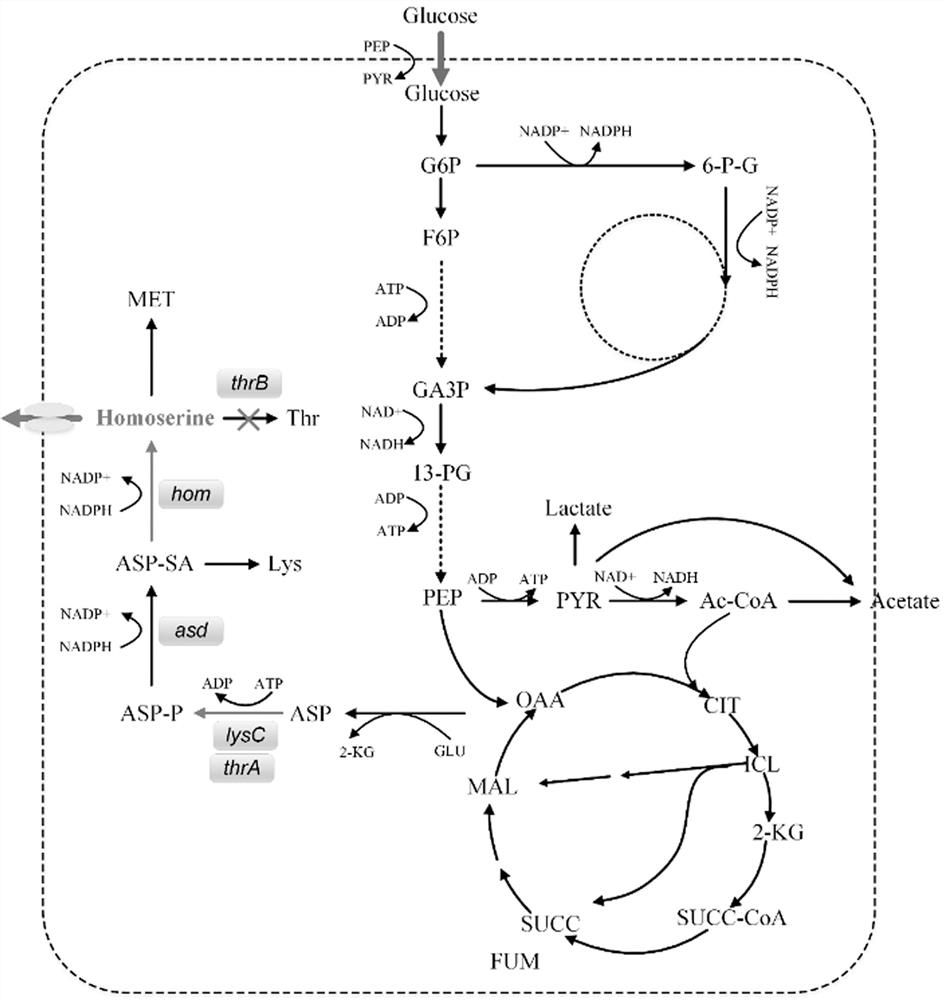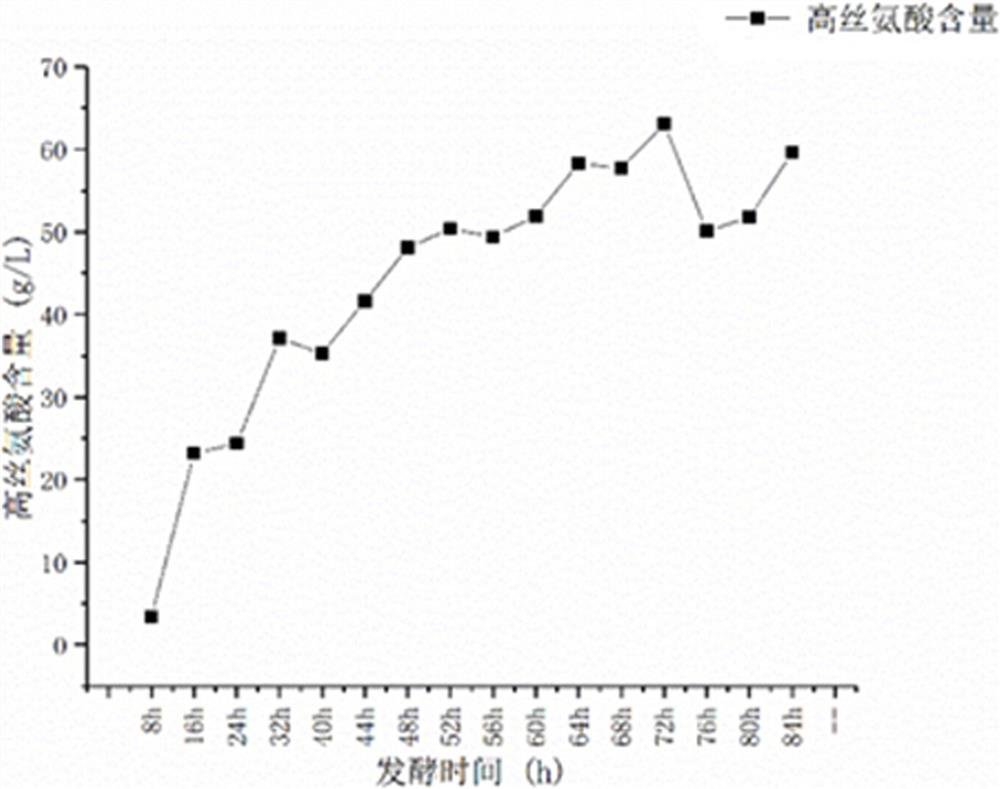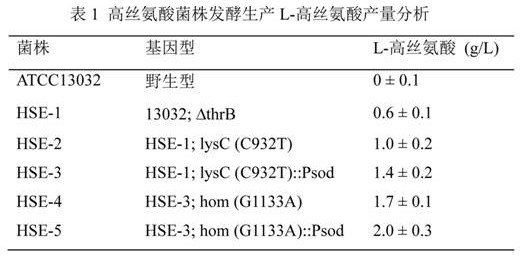Genetically engineered bacterium for producing L-homoserine and application of genetically engineered bacterium
A technology of genetically engineered bacteria and homoserine, applied in the field of high-yield L-homoserine, can solve the problems of large environmental pollution, high technical barriers, complex processes, etc., and achieve the effects of less environmental pollution, wide application prospects and high yield
- Summary
- Abstract
- Description
- Claims
- Application Information
AI Technical Summary
Problems solved by technology
Method used
Image
Examples
Embodiment 1
[0024] Embodiment 1 Corynebacterium glutamicum L-homoserine kinase gene thr B Construction of deletion strains
[0025] (1) to C. glutamicum The ATCC13032 genome was used as a template, and the primers thrB1-F / thrB1-R, thrB2-F / thrB2-R were used to perform PCR to obtain fragments thrB1 and thrB2, respectively. Then use the above-mentioned obtained PCR product as a template, and use thrB1-F / thrB2-R as primers to obtain a complete DNA fragment by fusion PCR, and pass the above-mentioned obtained DNA fragment through Bam H I and Xba After I double digestion, it was connected to the vector pCRD206 to obtain the knockout plasmid pCRD-thrB. Wherein, the L-homoserine kinase gene in this embodiment thr B Amino acid and nucleotide sequences (GenBank: CAF19888.1).
[0026] The primer information used is as follows:
[0027] thrB1-F: CGCGGATCCTTGAGGTTATCGGCGGCATTG
[0028] thrB1-R: GACTCACGAGCATCTTCCGACCGACGTTCAGTTCAATTG
[0029] thrB2-F: TGAACTGAACGTCGGTCGGAAGATGCTCGTGAGTCTG...
Embodiment 2
[0039] Example 2 Enhanced expression of aspartokinase hydrolysis feedback inhibition mutant gene lysC* (C932T) and homoserine dehydrogenase hydrolysis feedback inhibition mutant gene hom* (G1133A) at chromosome level.
[0040] (1) In order to realize the C932T point mutation of the lysC gene at the chromosome level, first use C. glutamicum The ATCC13032 genome was used as a template, and the DNA sequences lysC1 and lysC2 were obtained by PCR using primer pairs lysC1-F / lysC1-R and lysC2-F / lysC2-R respectively. Using the method of fusion PCR, the primer pair lysC1-F / lysC2-R was used to obtain the DNA fragment lysC*. The DNA fragment obtained above was passed through Bam H I and spe After I double digestion, it was connected to the vector pCRD206 to obtain the point mutation plasmid pCRD-lysC*. Electrotransfer of Point Mutation Plasmid pCRD-lysC* into L-homoserine Kinase Gene of Corynebacterium glutamicum thr B Deletion strain HSE-1 cells. Electroporation conditions are ...
Embodiment 3
[0069] Example 3 Analysis of homoserine produced by fermentation of different homoserine strains
[0070] Inoculate Corynebacterium glutamicum wild-type ATCC 13032 and Corynebacterium glutamicum engineering strains HSE-1, HSE-2, HSE-3, HSE-4 and HSE-5 obtained above into 20-25mL seed medium containing In a 250 mL Erlenmeyer flask, culture for 12h~16h to mid-logarithmic phase. Then the cells were collected by centrifugation, suspended with fresh fermentation medium, inoculated into a 250 mL Erlenmeyer flask containing 50 mL of fermentation medium, and the initial OD 600 0.8~1.2, and add 5~15 g / L CaCO 3 . The fermentation conditions were 30 ºC, 150-200 rpm, constant temperature shaking culture. The fermentation medium is: glucose 50~60 g / L, urea 0.1~0.2 g / L, corn steep liquor 5~10 g / L, ammonium sulfate 15~20 g / L, KH 2 PO 4 5~6 g / L, MgSO 4 ·7H 2 O 2 ~5 g / L, FeSO 4 ·7H 2 O 0.2~0.5 g / L, MnCl 2 4H 2 O 0.2~0.4 g / L, biotin 0.2~0.4 mg / L, vitamin B1 1~2 mg / L, vitamin B6 1~2...
PUM
 Login to View More
Login to View More Abstract
Description
Claims
Application Information
 Login to View More
Login to View More - R&D Engineer
- R&D Manager
- IP Professional
- Industry Leading Data Capabilities
- Powerful AI technology
- Patent DNA Extraction
Browse by: Latest US Patents, China's latest patents, Technical Efficacy Thesaurus, Application Domain, Technology Topic, Popular Technical Reports.
© 2024 PatSnap. All rights reserved.Legal|Privacy policy|Modern Slavery Act Transparency Statement|Sitemap|About US| Contact US: help@patsnap.com










